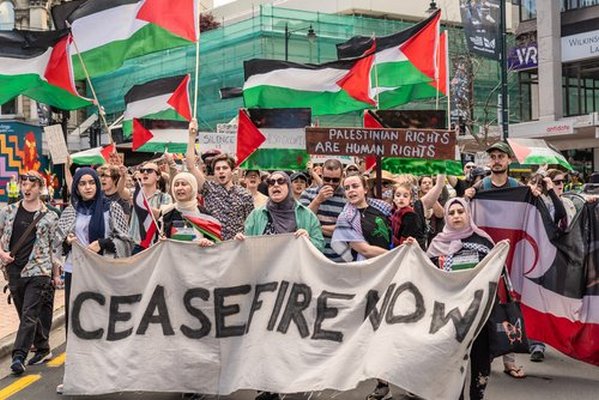A Crucial Moment in the War
The release of the hostages by Hamas is a crucial moment now in a war in its 15th month, and the truce agreement that came into effect on January 19 and involved the exchange of prisoners, has proved to be an important step for both sides. Under the terms of the agreement, Hamas released three Israeli hostages in exchange for the freeing of a significant number of Palestinian prisoners held in Israel, mainly those accused of terrorism. The three people in question were paraded in front of a crowd before being handed over to the Red Cross, awaiting their return to Israeli territory. Shortly after, they were handed over to the Tel Aviv army. The balance between prisoner and hostage releases is at the heart of the truce agreement and how both sides seek to maximize the benefits of the agreement.
In total, between 1,000 and 1,650 Palestinian prisoners are expected to be freed during this phase of negotiations, a number that includes some individuals serving life sentences. In return, Israel is getting the release of Israeli hostages, in a ratio that varies depending on the type of hostage involved. For every Israeli civilian hostage freed, 30 Palestinian prisoners are expected to be let out by Israel, while for every female Israeli soldier, the number of Palestinian prisoners that will be released rises to 50. These details have created debate about the proportions and fairness of the deal, but both governments appear to have made compromises to ensure a lull in the conflict and the safety of the hostages.
To date, six Israeli hostages have been freed, but the process has been more complex than expected. While the Israeli hostages have been returned, the physical conditions of some have been a matter of concern. Growing international attention has focused on the precarious conditions of some of them, with images of the distressed faces of some hostages arousing a globally great emotion and discussion.
Israel, for its part, has had to make difficult decisions regarding the release of Palestinian prisoners. Some of these are believed to be responsible for lethal attacks against Israelis, and their release has drawn criticism from within Israeli society. The government, however, has argued that the release of prisoners was necessary to bring its citizens home, a sign of priority in protecting human life, although controversial in terms of criminal justice.
Meanwhile, the current US President Donald Trump sent a loud and clear message, warning Hamas that if it didn’t free the remaining hostages, it would face “hell.” These words not only express US concern about the situation, but also suggest a possible escalation of Western involvement in the region. This message could be seen as an attempt to put pressure on Hamas and, at the same time, to mark a contrast with the line taken by the Biden administration, which has instead focused on indirect negotiations and diplomacy.
Overall, the truce agreement and the exchange of hostages and prisoners reflect a delicate balance between political strategy and humanitarian considerations. Both sides are forced to make difficult concessions: Hamas wins the release of many of its detained members, while Israel manages to bring home its hostages. However, tensions remain high, and many wonder whether this agreement can really mark the beginning of a long period of peace or whether it is just a temporary pause in a conflict that seems destined to last.
By Martina Abbate
Marco Caldiero
IV B Liceo Classico
